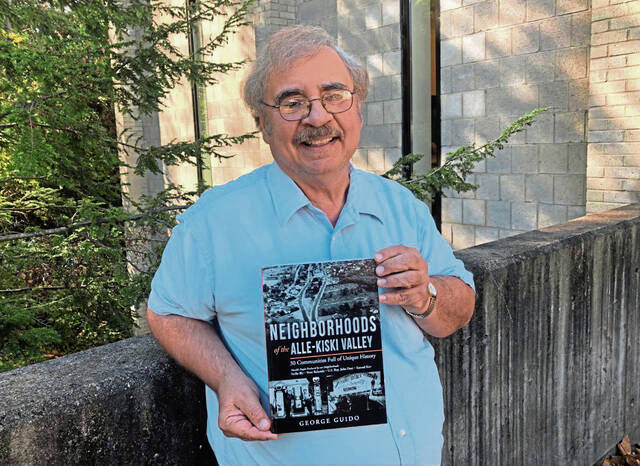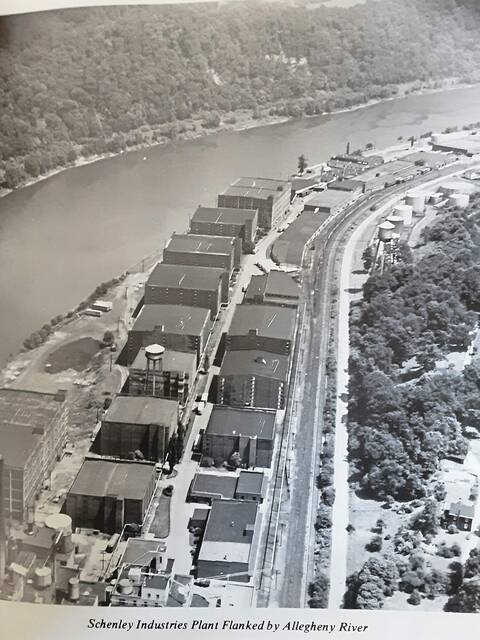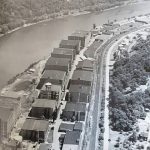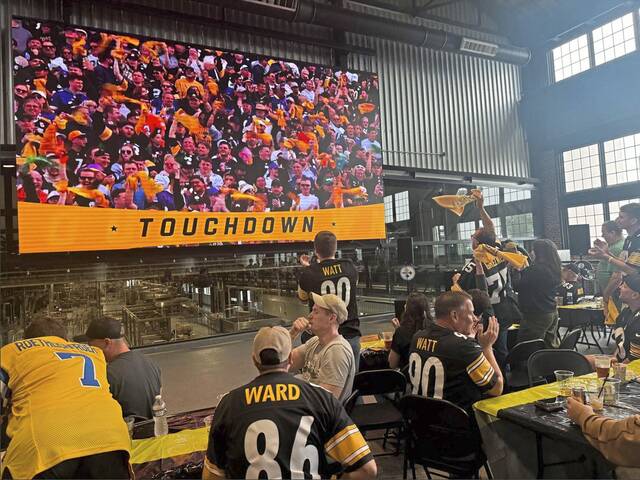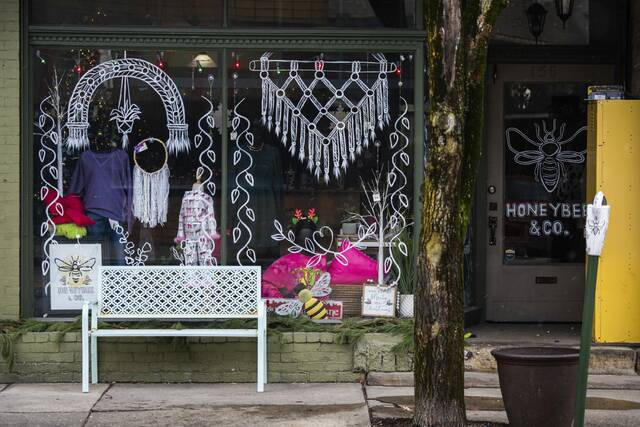From Aluminum City Terrace to Yellow Dog Village, there’s a story behind every little town in the Alle-Kiski Valley.
Writer George Guido of Lower Burrell has collected many of them in his new book, “Neighborhoods of the Alle-Kiski Valley: 30 Communities Full of Unique History.” He’ll be selling copies from 5 to 8 p.m. Thursday at the Tarentum Night Market.
Guido has delved into local history before, writing “Remember When” and “Through the Years” columns for the Valley News Dispatch, along with a book on Alle-Kiski Valley sports history and a photographic history of New Kensington for the city’s 125th anniversary in 2016.
This time around, Guido said, he focused on “30 neighborhoods in the Valley News Dispatch circulation area, mostly little neighborhoods that sprung up around coal mines, and some were suburban outlays in the late 19th and early 20th centuries.”
The spotlight also hits some of those neighborhoods’ more notable — or should we say notorious — citizens.
“When you do research, you stumble on a lot of stuff,” Guido said.
He learned pioneering carmaker Henry Ford was interested in building a glass plant in Glassmere during the 1920s.
“He and others found that the sand along the banks of the Allegheny River was conducive to glass-making. He wanted a glass plant for his windows and windshields,” Guido said. “They wanted to dredge the Allegheny River and put in a canal from the Alle-Kiski Valley to Lake Erie, so Henry Ford could transport his windshields and such by boat to his plant in Dearborn (Mich.).
“It never materialized. The Great Depression came, World War II came, and there was just no money to do a public works project like that,” he said. “Ford did build some homes in the area, and some are still standing.”
Notable names
Then there’s the colorful story of Yellow Dog Village.
“It was up near Kittanning, and there was a limestone mine there in the 1890s and early 1900s. Of course, nobody had a car, so the workers had to get there by horseback or train, or walk,” Guido said. “The guy who owned the mine decided to build his own houses. You could buy a house from him if you promised not to join a union or try to form a union.
“Back then, those were called yellow dog contracts, so Yellow Dog Village just sprouted there, because the people who lived there had to promise not to get involved in union activities,” he said.
No book about the Alle-Kiski Valley would be complete without a mention of pioneering journalist Nelly Bly, born Elizabeth Jane Cochran in 1864 in Cochran Mills, now part of Burrell Township.
She was studying at Indiana Normal School (now Indiana University of Pennsylvania) when her father died, Guido said.
“There was no more money for her to go to college, so she dropped out and she and her mother moved to Pittsburgh to, more or less, start over,” he said. “The editor of one of the Pittsburgh newspapers wrote an editorial that women should only concentrate on being nurses and schoolteachers, and she wrote a letter back saying that’s not true, women are qualified to do many other jobs.
“She was 18 at the time, and he was so impressed that he hired her for $5 a week, and she ended up doing all these groundbreaking things,” Guido said, including an exposé of conditions in a New York “lunatic asylum” and the challenge she accepted to travel around the world in 80 days — which she did in 72 days.
On the scandalous side is the story of Mary Schenley, whose name graces a Pittsburgh park, a former high school and an unincorporated community in Gilpin. At 15, she was sent to finishing school in New York, only to elope with the brother of the school owner, a man who was 42 at the time.
And then there was Natrona native Leon Czolgosz, who assassinated President William McKinley in 1901.
“Every community has its story, but I’m sure Natrona doesn’t want to hang their hat on that,” Guido said.
Pandemic problems
The book started with a suggestion from Karen Watkins, owner of The Last Word Bookstore in Lower Burrell.
“She said, ‘Why don’t you do something on neighborhoods?’ So I ran with that idea,” he said. He just couldn’t run very fast with it during the pandemic.
“The problem with that was the museums were closed, the libraries were closed,” he said. “To really do the research, I had to wait for them to open up.”
He also sourced stories and photos from historical societies, Valley News Dispatch archives and personal collections.
His publishers are Tom and Francine Costello, owners of Word Association in Tarentum.
They’ve run into supply chain problems in having the book printed, but Guido did receive his first 125 copies late last week.
“I sold half of them in four days,” he said.
He’ll keep printing and selling to meet demand, he said. The book is available on amazon.com and can be ordered on his Facebook page.
He figures that his main audience is local residents and former residents who keep up with what’s going on back home through social media and word of mouth.
“I’ve been able to tap into community Facebook pages and class reunions. That’s basically the marketing,” he said. “I put something on Facebook around 2:30 p.m. Friday when I got the books, and I got 247 likes on the New Kensington page and 100-some likes on my page.”


